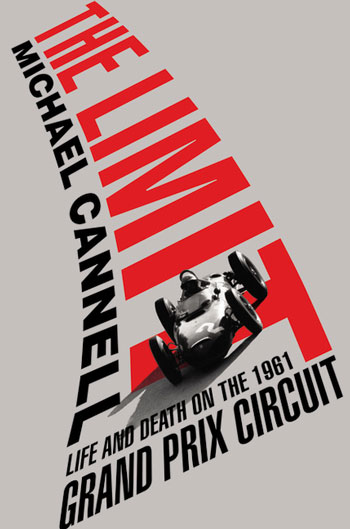 The book is out, the reviews are rave. The Boston Globe says “The Limit, Life and Death on the 1961 Grand Prix Circuit” reads “like a thriller”; the Wall Street Journal calls it a “well researched chronicle” and “an enthralling history of road racing’s golden era”; USA Today said it “deserves a spot in the library—if not, soon enough, on the DVD rack” Indeed, author Michael Cannell, a lifelong New Yorker who is not a car nut and who doesn’t even own one, sold the rights to the movie before the book was even written.
The book is out, the reviews are rave. The Boston Globe says “The Limit, Life and Death on the 1961 Grand Prix Circuit” reads “like a thriller”; the Wall Street Journal calls it a “well researched chronicle” and “an enthralling history of road racing’s golden era”; USA Today said it “deserves a spot in the library—if not, soon enough, on the DVD rack” Indeed, author Michael Cannell, a lifelong New Yorker who is not a car nut and who doesn’t even own one, sold the rights to the movie before the book was even written.
For us hardcore euro-car-nuts, much ado about an old subject. But Cannell thought that the story of Phil Hill and von Trips would resonate with today’s audience, and apparently he was right. According to the Hollywood Reporter, Spiderman Tobey Maguire snapped up the rights to develop the project at Columbia Pictures long before the book was published, perhaps in an attempt to keep ahead of filmmaker Ron Howard, who will begin shooting the Lauda/Hunt epic, “Rush”, in February. Then there is A.J. Baime’s “Go Like Hell”, also presumably in the process of getting to the big screen, not to forget that Wallace Wyss’s book SHELBY: The Man The Cars The Legend has also optioned its movie rights to a film producer.
VeloceToday will review “The Limit” in depth next week. But even before the book was published, Wally Wyss caught up with author Michael Cannell, and asked all the right questions. His interview follows.
Interview by Wallace Wyss
Wyss: Mike, what is your background? Are you a car guy per se?
Cannell: Strangely enough, I’m not a car guy. Quite the contrary, in fact. As a lifelong New Yorker, I don’t own a car. And I’m a pretty poor driver. It is a source of some embarrassment to me that I have shown up to interview great automotive figures in a compact rental car that I can hardly park.
Wyss: Coming into this subject, I noticed that your previous book was “I.M. Pei: Mandarin of Modernism”. Did you know about architecture before you started on that?
Cannell: I knew a great deal about architecture. I had written dozens and dozens of newspaper and magazine articles about design. Though I did not have an insider’s view of the subject. I believe that a good reporter can write on any subject if they do their legwork. I flat out reject the notion that a reporter has to be trained and educated in a field before they are entitled to write about it. This was a point of some contention between me and Mr. Pei.
Wyss:What drew you to the subject of Hill and von Trips?
Cannell: I used to work at The New York Times. Sitting at my desk in the newsroom some years ago I saw a copy of “The Cruel Sport,” a book about Grand Prix in the 1950s written by Robert Daley, a fine writer who covered the races for the newspaper. As much as anything it was the photographs that seduced me. So much of the emotion of the sport–the agony and the ecstasy–is vivid in those black and white photos. And they contain such an evocative sense of place: Le Mans and Monte Carlo and Monza in the late 1950s. I remember thinking, ‘If I could find a story in this world it would make a great book.’ My book was published this month, November of 2011. Tony Peckham has written a screenplay for Columbia.
Wyss: Is Peckham a “car guy?”
Cannell: I’m not sure that Tony is any more of a car guy than I am.
Wyss: Do you think that because Peckham’s screenplay for the rugby movie “Invictus” was a success, that he will be able to capture the spirit of Formula I racing as well?
Cannell: This is story about people first. It’s a story about two young men–Phil Hill and Wolfgang von Trips–whose lives converged on the Ferrari race team of the late 1950s. They were friends and teammates, but they were opposites in every imaginable way. Circumstances conspired to pit them against one another in 1961. One became champion. The other died. I think Tony is a well qualified to capture the drama and suspense of that story.
Wyss: Isn’t it unusual that you sold the book rights prior to it being finished? Don’t producers usually have to read a book first or did they read a rough draft?
Cannell: Normally film rights are sold when the book is complete. However, my agent wanted to accelerate the process because A.J. Baime’s book “Go Like Hell”, about the Ford-Ferrari rivalry, came out last year. Apparently it has a movie project attached to it, and we didn’t want their movie to get too far ahead of ours.
Wyss: Since Phil Hill is now deceased, did you have to get the family’s permission to do a book on him?
Cannell: I have talked at some length to Hill’s son Derek, who is handling his father’s estate. I also spent a lovely afternoon with Hill’s widow Alma. The consensus among everyone involved was that the movie studio would make a deal with them, and they did. Derek subsequently asked for additional payment from me. I’m not in a position to do that. No responsible journalist would pay a source.
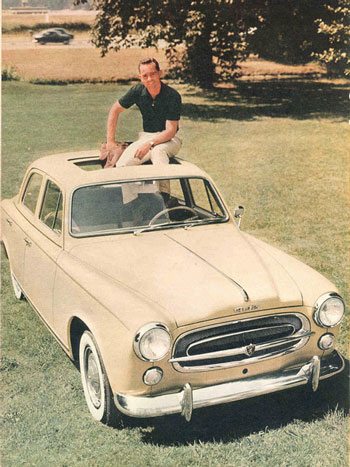
Hill helped push Peugoets in the U.S. Was Ferrari thinking that Hill's success would help Ferrari sales in the U.S.?
Wyss: Did you find that Ferrari was hiring American drivers like Richie Ginther, Dan Gurney, Phil Hill, etc. because they were good, or was he hoping to improve Ferrari sales in America?
Cannell: I think he hired them because they were good, but with the expectation that they would boost American sales. We forget how important exports were to European manufacturers back then. The Europeans were still recovering from the war, and they depended enormously on U.S. sales. Ferrari may also have considered Americans somewhat expendable. Ginther, Gurney and Hill filled the void left when great Italian drivers like Ascari, Castellotti and Musso died. Ferrari took enormous heat from the Vatican and politicians every time an Italian died. I think part of his thinking was that nobody would care if a kid from Santa Monica died in the Mille Miglia or Monza.
Wyss: Phil Hill has been described as “the thinking man’s race driver,” so do you agree with that—was he applying a lot of brainpower to the task? Was that also why he had an ulcer and was jumpy?
Cannell: Hill was once called “Hamlet with goggles and gloves.” Time magazine called him “butterfly bellied.” He was notoriously anxious before the races, and he broke a taboo by speaking candidly about death and danger. He was so nervous he often could not digest solid food. He traveled with crates of baby food. But when the cars were pushed out onto the grid he was all focus. He had an uncanny sympathy for the mechanics, which he acquired in part from his hot rodding days in California. He had an unbelievable grasp of the engineering. He was also intensely interested in musical instruments. For him, there was not that much difference between a Steinway and a Ferrari. Both were mechanics in service to beauty.
Wyss: Who decided to concentrate just on the year 1961 for the movie and was it because it is a more dramatic story if you build it around one significant event?
Cannell: I originally intended to focus exclusively on 1961, the year that Hill and von Trips dominated the Grand Prix. But I ended up including much of their careers as a lead up to 1961. There is simply too much fascinating material, including their childhood. I believe Tony Peckham is focusing only on 1961.
Wyss: What’s been the best thing submitted to you on your website so far—private letters from Hill or von Trips? Articles from little known magazines?
Cannell: A first-rate reporter named Michael Dumiak translated Wolfgang von Trips’ letters, diary entries and other material for me. This material is so rich and poignant I just hope I can do it justice. It is the heart wrenching story of a man who very much wanted to be the smiling handsome face of a new Germany. He so much wanted to be the German champion that his country wanted and needed at a time of Cold War divisions. The Berlin Wall went up just before the end of the 1961 season.
Wyss: With each new revelation, did you have to go back and revise what you wrote, for instance if you wrote in your book that von Trips was not mechanically inclined but then found out he started a Formula Junior business and had to change your opinion, did you include that, and so forth?
Cannell: I was constantly revising and rethinking. Each batch of new reporting and research raises new questions that have to be addressed. And you have put your finger on one of them. Von Trips is presented by at least one responsible journalist as disinterested and ill-informed about mechanics. Hill certainly viewed him that way. But I have come to second guess that view. I’m not sure that you could get within a race of the championship without extensive mechanical knowledge–especially in those days.
Wyss: Racing movies have not done that well box office wise, though it seems the film Grand Prix is a much treasured one still popular with F1 fans today. Do you feel it is difficult to make a film that has enough cars in it for the techno buffs and yet enough story for those who like more a story about the personalities?
Cannell: That’s a balance Tony Peckham and the producers will have to find. I’m not involved on the film side, except as a guy who is happy to answer questions when Hollywood calls.
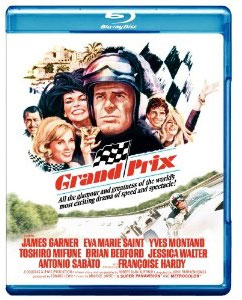
Wyss: Now that you are a devotee of Fifties and Sixties racing, do you follow the modern day F1 racing or think it’s too high tech now and the drivers too remote to make it as interesting as it was back then, fifty years ago?
Cannell: Oddly enough I don’t follow modern day F1 at all. It seems far more interesting to me in the days when the drivers were not surrounded by sponsors and media handlers. There is a real sense that the 1950s drivers drove because they loved it. They certainly didn’t do it for the money back then.
Wyss: Did anyone contact you out of the blue with pictures that have never been published before of von Trips or Hill?
Cannell: Nobody has volunteered photos yet, but I loved to put the invitation out to contact me (michaelcannell@mac.com). I was, however, given a parcel of images by Louise King, widow of the British driver Peter Collins. She gave me wonderful photos of Hill and von Trips but they did not appear in the book.
Wyss: What well known drivers and/or car builders or mechanics have you interviewed about Hill and von Trips?
Cannell: Stirling Moss was a great source, and quite generous with his memories. Bruce Kessler, who drove a privately owned Ferrari, was fantastically helpful and good-spirited about helping me.
Wyss: Thank you.
Michael Cannell will lecture at the Free Library of Philadelphia on Tuesday, November 29th, at 7:30 PM. The event is free. More information is available at 215-567-4341.
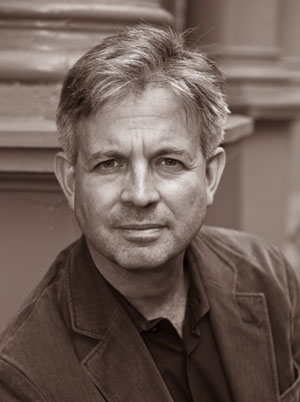
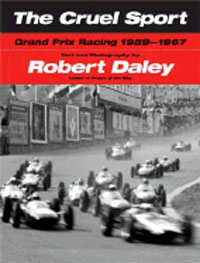
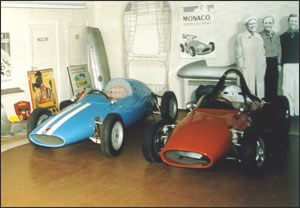
I’d get it for the cover alone! What a great design!
Great interview and and important book for those of us who love racing and Formula 1.